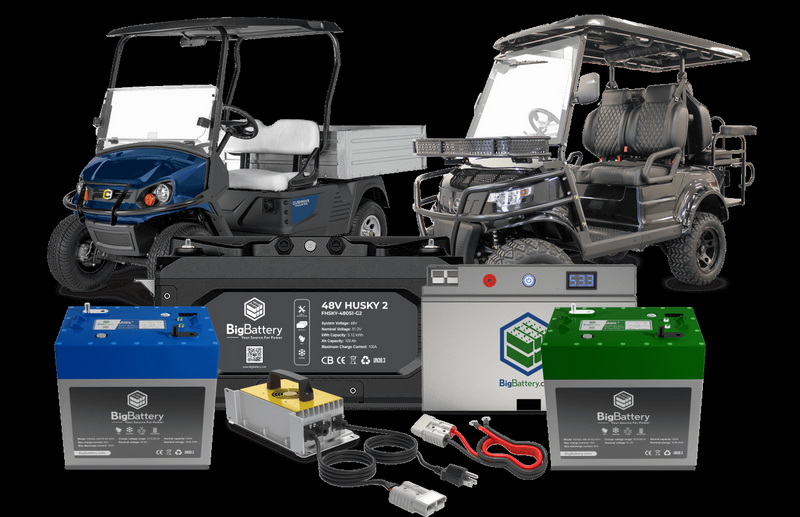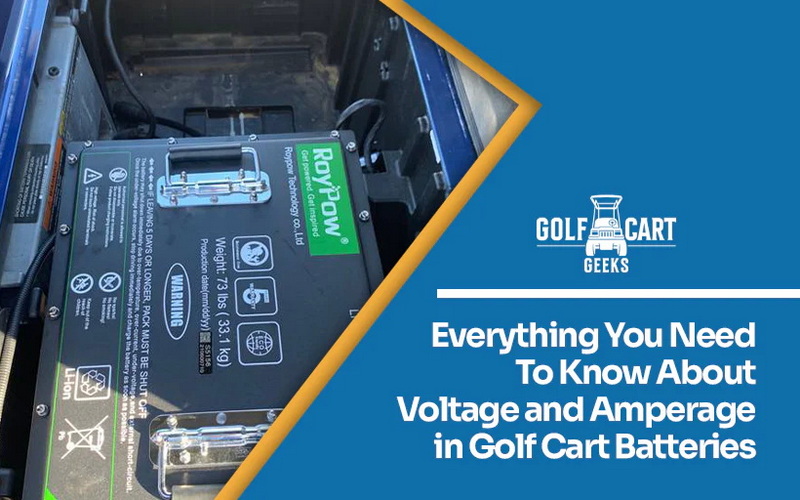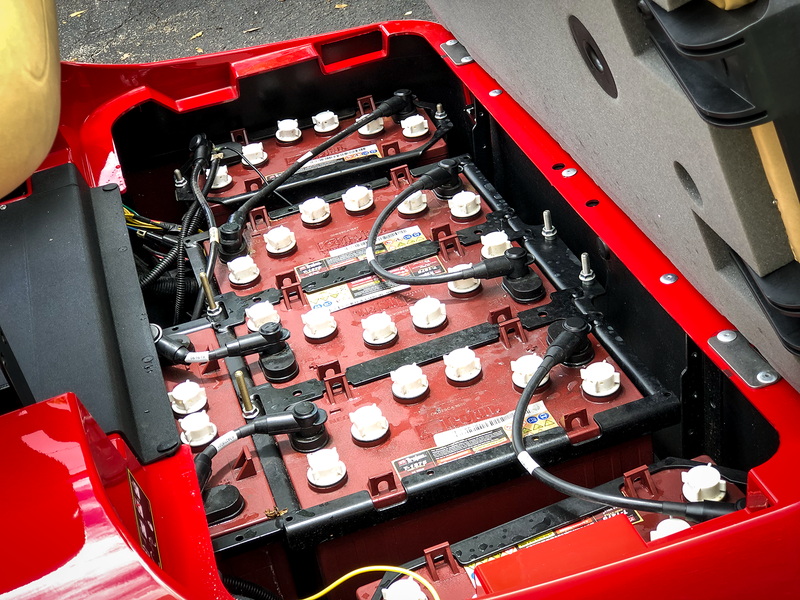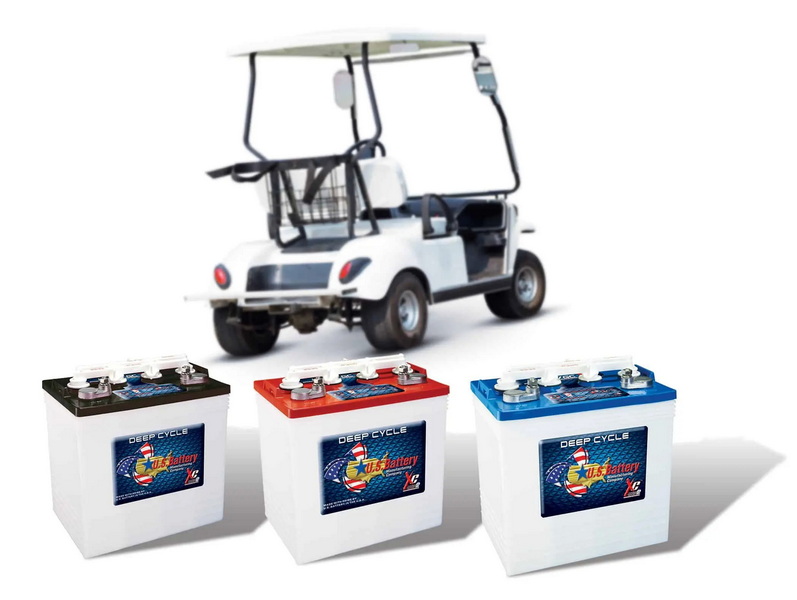Content Menu
● Understanding Voltage in Electric Golf Carts
>> Common Voltage Systems in Golf Carts
>>> 36-Volt Systems
>>> 48-Volt Systems
>>> 72-Volt Systems
● Amperage in Electric Golf Carts
>> Typical Amperage Draws
>> Battery Capacity and Amp-Hours
● The Relationship Between Voltage and Amperage
● Factors Affecting Golf Cart Range and Performance
● Choosing the Right System for Your Needs
● Maintenance and Care for Golf Cart Electrical Systems
● Innovations in Golf Cart Battery Technology
>> Lithium-Ion Batteries
>> Solar-Powered Golf Carts
● Conclusion
● Frequently Asked Questions (FAQ)
>> 1. How long do golf cart batteries typically last?
>> 2. Can I upgrade my golf cart from 36 volts to 48 volts?
>> 3. How often should I charge my golf cart batteries?
>> 4. What's the average range of an electric golf cart on a single charge?
>> 5. Are lithium-ion batteries worth the extra cost for golf carts?
Electric golf carts have become increasingly popular in recent years, not only for their use on golf courses but also in various other settings such as retirement communities, college campuses, and even some urban areas. One of the most crucial aspects of these vehicles is their electrical system, which determines their performance, range, and overall efficiency. In this comprehensive guide, we'll explore the world of electric golf cart voltages and amperages, providing you with valuable insights into how these factors affect your cart's operation.

Understanding Voltage in Electric Golf Carts
Voltage is a measure of electrical potential difference between two points in a circuit. In the context of golf carts, it's essentially the "pressure" that pushes electricity through the system. The higher the voltage, the more power is available to drive the cart's motor.
Common Voltage Systems in Golf Carts
Most electric golf carts operate on one of three voltage systems:
1. 36-volt systems
2. 48-volt systems
3. 72-volt systems (less common, typically found in high-performance models)
The 36-volt and 48-volt systems are the most prevalent in the market. Let's take a closer look at each:
36-Volt Systems
A 36-volt system typically consists of six 6-volt batteries connected in series. This configuration is common in many older or entry-level golf carts. While it provides sufficient power for most standard golf course applications, it may struggle on hilly terrain or when carrying heavier loads.
48-Volt Systems
48-volt systems have become increasingly popular due to their improved performance and efficiency. These systems can be configured in several ways:
- Eight 6-volt batteries
- Six 8-volt batteries
- Four 12-volt batteries
The 48-volt system offers better acceleration, higher top speeds, and improved hill-climbing ability compared to 36-volt systems.
72-Volt Systems
While less common, 72-volt systems are sometimes used in high-performance or custom golf carts. These systems provide even more power and are often found in carts designed for off-road use or those that have been modified for increased speed and performance.

Amperage in Electric Golf Carts
While voltage determines the potential power of the system, amperage (measured in amps) represents the actual flow of electricity. In golf carts, amperage is crucial for understanding the cart's range and performance capabilities.
Typical Amperage Draws
On average, electric golf cart motors operate at 36 or 48 volts and draw between 50-70 amps of current while cruising at about 15 miles per hour[8]. However, it's important to note that the amperage draw can vary significantly depending on several factors:
1. Acceleration: When accelerating, the motor may draw significantly more current, potentially up to 200 amps or more for short bursts.
2. Terrain: Climbing hills or navigating rough terrain will increase the amperage draw.
3. Load: Heavier loads (passengers or cargo) will require more power, thus increasing the amperage draw.
4. Speed: Higher speeds generally require more current.
Battery Capacity and Amp-Hours
The capacity of golf cart batteries is typically measured in amp-hours (Ah). This rating indicates how many amps the battery can provide over a specific period. For example, a 100 Ah battery can theoretically provide 1 amp for 100 hours, 10 amps for 10 hours, or 100 amps for 1 hour (although in practice, the relationship is not perfectly linear due to various factors affecting battery performance).
The Relationship Between Voltage and Amperage
Understanding the relationship between voltage and amperage is crucial for optimizing your golf cart's performance. Here's a simple way to think about it:
- Voltage is like the water pressure in a pipe
- Amperage is like the flow rate of water through the pipe
Together, they determine the overall power output of your golf cart's electrical system. This relationship is expressed by the formula:
Power (Watts) = Voltage (Volts) × Current (Amps)
For example, a golf cart motor drawing 50 amps at 48 volts is consuming 2,400 watts of power.

Factors Affecting Golf Cart Range and Performance
Several factors influence the range and performance of an electric golf cart:
1. Battery Capacity: Higher amp-hour ratings generally mean longer range.
2. Voltage System: Higher voltage systems typically offer better performance.
3. Terrain: Hilly or rough terrain will reduce range and may require more powerful systems.
4. Driving Style: Aggressive acceleration and high speeds will decrease range.
5. Load: Heavier loads require more power and reduce range.
6. Temperature: Extreme temperatures (both hot and cold) can affect battery performance.
Choosing the Right System for Your Needs
When selecting an electric golf cart or upgrading an existing one, consider the following:
1. Intended Use: Are you using it primarily on flat golf courses or in hilly areas?
2. Required Range: How far do you need to travel on a single charge?
3. Performance Needs: Do you require higher speeds or better acceleration?
4. Budget: Higher voltage systems and larger capacity batteries generally cost more.
Maintenance and Care for Golf Cart Electrical Systems
Proper maintenance is crucial for ensuring the longevity and performance of your golf cart's electrical system:
1. Regular Charging: Keep batteries charged, avoiding deep discharges.
2. Water Levels: For lead-acid batteries, maintain proper water levels.
3. Clean Connections: Keep battery terminals clean and free of corrosion.
4. Proper Storage: Store your cart in a cool, dry place when not in use.
5. Professional Inspections: Have your cart's electrical system inspected regularly by a professional.

Innovations in Golf Cart Battery Technology
The golf cart industry is continually evolving, with new battery technologies emerging:
Lithium-Ion Batteries
Lithium-ion batteries are becoming increasingly popular in golf carts due to their numerous advantages:
- Lighter weight
- Longer lifespan
- Faster charging times
- Maintenance-free operation
While more expensive upfront, lithium-ion batteries can offer significant long-term benefits in terms of performance and total cost of ownership.
Solar-Powered Golf Carts
Some manufacturers are experimenting with solar panels integrated into golf cart roofs. While not yet capable of fully powering a cart, these systems can help extend range and reduce the frequency of charging.
Conclusion
Understanding the voltage and amperage requirements of electric golf carts is essential for both owners and potential buyers. The right combination of voltage and amperage can significantly impact your cart's performance, range, and overall efficiency. While 36-volt and 48-volt systems remain the most common, advancements in battery technology are continually pushing the boundaries of what's possible in electric golf cart performance.
As you consider your options, remember to factor in your specific needs, usage patterns, and budget. Whether you're looking for a basic cart for occasional use or a high-performance vehicle for daily operation, there's an electric golf cart system that's right for you.

Frequently Asked Questions (FAQ)
1. How long do golf cart batteries typically last?
The lifespan of golf cart batteries depends on several factors, including usage patterns, maintenance, and battery type. On average, lead-acid batteries last 4-6 years with proper care, while lithium-ion batteries can last 8-10 years or more.
2. Can I upgrade my golf cart from 36 volts to 48 volts?
While it's technically possible to upgrade from 36 volts to 48 volts, it's not always straightforward. Such an upgrade typically requires changes to the motor, controller, and other electrical components. It's best to consult with a professional to determine if an upgrade is feasible and cost-effective for your specific cart model.
3. How often should I charge my golf cart batteries?
It's best to charge your golf cart batteries after each use, regardless of how much charge was used. This practice, known as "opportunity charging," can help extend battery life by preventing deep discharges. Always follow the manufacturer's recommendations for your specific battery type.
4. What's the average range of an electric golf cart on a single charge?
The range of an electric golf cart can vary widely depending on factors such as battery capacity, terrain, and driving style. On average, most golf carts can travel between 15-25 miles on a single charge. However, some high-performance models or those with larger battery capacities can achieve ranges of 35 miles or more.
5. Are lithium-ion batteries worth the extra cost for golf carts?
While lithium-ion batteries have a higher upfront cost, they can be worth the investment for many users. They offer longer lifespans, require less maintenance, charge faster, and provide more consistent performance throughout their discharge cycle. For frequent users or those seeking top performance, the long-term benefits often outweigh the initial cost difference.












































